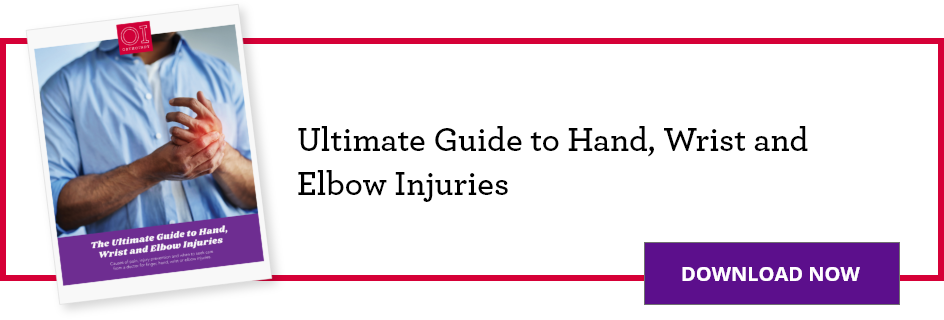THIS POST IS PART OF THE ULTIMATE GUIDE TO HAND, WRIST AND ELBOW INJURIES
A broken wrist, also referred to as a distal radius fracture, usually occurs one inch from the end of the radius bone and is the most common broken bone in the body.
Anatomy
The forearm has two bones, the radius and the ulna. The radius is the larger of the two bones in the forearm (lower arm). The end of the radius toward the wrist is called the distal end. A fracture of the distal radius occurs when the area of the radius near the wrist breaks.
What causes your wrist to break?
A broken wrist can occur many different ways; however, a fall onto an outstretched arm is the most common, such as a car accident or a fall off a bike. Osteoporosis, the softening of the bone with age, can also make a relatively minor fall result in a distal radius fracture especially in those over 60 years old.
What are the symptoms of a broken wrist?
- Immediate pain
- Tenderness
- Bruising
- Swelling
- In some cases the wrist hangs in an odd or bent way
- A deformed appearance
How is a broken wrist diagnosed?
To determine whether you have broken your wrist, your physician will ask you for a complete medical history and conduct a physical examination. An X-ray can confirm the diagnosis.
Make an appointment with a hand, wrist or elbow specialist
How is a broken wrist treated?
Treatment options depend on the nature of the fracture, the patient’s age and the patient’s activity level.
Nonsurgical treatment
If the broken bone is in a good position or can be put back into good alignment, a cast can be used to keep the wrist steady until it heals. Usually, the cast is required for six weeks.
Surgical treatment
If the broken bone is out of place and the alignment cannot be corrected, surgery may be required. A variety of methods can be used to hold the fracture in place after surgery. This includes plates and screws, small thin pins that are in the bone but also stick out of the skin or an external fixator (again, pins that are in bone and also stick out of the skin but with this method, they are connected by bars that hold the alignment).
All of these methods work well and it will be your orthopedic surgeon that will make the determination as to which method is best for you and your particular fracture pattern.
How do you recover from a broken wrist?
Broken wrist recovery depends on the severity of the injury. Most fractures hurt moderately for a few days to a couple weeks. In most cases, the bone heals in 6 to 12 weeks. Your function, although mostly recovered by four months, will continue to improve for up to a year.
Schedule an appointment
Your well-being is important to us. Click the button below or call us to schedule an appointment with one of our orthopedic specialists. If your injury or condition is recent, you can walk right into one of our OrthoIndy Urgent Care locations for immediate care. For rehabilitation and physical therapy, no referral is needed to see one of our physical therapists.






